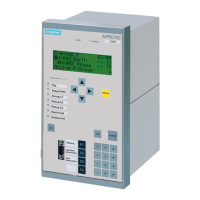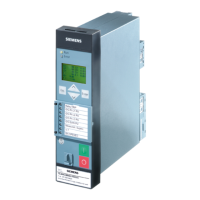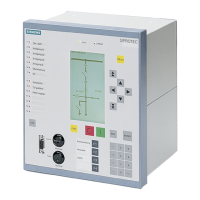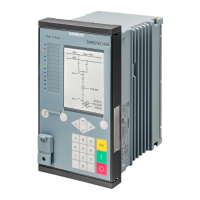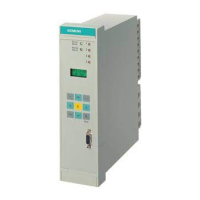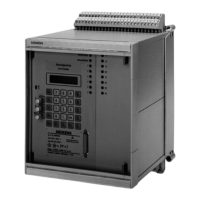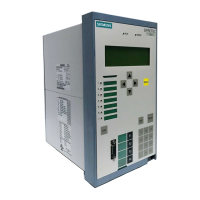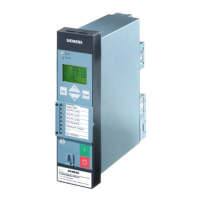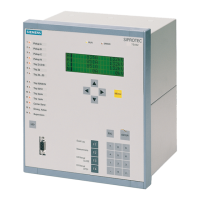2.1 General
35
7SD610 Manual
C53000-G1176-C145-4
Trip command
duration
In address 240 the minimum trip command duration TMin TRIP CMD is set. It applies
to all protective and control functions which may issue a trip command. It also deter-
mines the duration of the trip pulse when a circuit breaker test is initiated via the
device. This parameter can only be altered using DIGSI under Additional Settings.
In address 241 the maximum close command duration TMax CLOSE CMD is set. It
applies to all close commands issued by the device. It also determines the length of
the close command pulse when a circuit breaker test cycle is issued via the device. It
must be long enough to ensure that the circuit breaker has securely closed. There is
no risk in setting this time too long, as the close command will in any event be termi-
nated following a new trip command from a protective function. This parameter can
only be altered using DIGSI under Additional Settings.
Circuit breaker test 7SD610 allows a circuit breaker test during operation by means of a tripping and a
closing command entered on the front panel or using DIGSI. The duration of the trip
command is set as explained above. Address 242 T-CBtest-dead determines the
duration from the end of the trip command until the start of the close command for this
test. It should not be less than 0.1 s.
Current
transformer char-
acteristic
The basic principle of the differential protection assumes that all currents flowing into
a healthy protected section add up to zero. If the current transformer sets at the line
ends have different transformation errors in the overcurrent range, the total of the sec-
ondary currents can reach considerable peaks when a short-circuit current flows
through the line. These peaks may feign an internal fault. The measures to prevent
errors in case of current transformer saturation included in 7SD610 work completely
satisfying if the protection knows the response characteristic for transmission failures
of the current transformers.
For this, the characteristic data of the current transformers and of their secondary cir-
cuits are set (see also Figure 2-17 in Section 2.3). The default setting is adequate in
most cases; it considers the data of the worst-case protective current transformers.
The rated accuracy limit factor n of the current transformers and the rated power P
N
are usually stated on the rating plate of the current transformers. The information
stated refers to reference conditions (nominal current, nominal burden). For example
(according to VDE 0414 / Part 1 or IEC 60044)
Current transformer 10P10; 30 VA → n = 10; P
N
=30VA
Current transformer 10P20; 20 VA → n = 20; P
N
=20VA
The operational accuracy limit factor n' is derived from these rated data and the actual
secondary burden P':
With
n' = operational accuracy limit factor (effective overcurrent factor)
n = rated accuracy limit factor of the current transformers (distinctive
number behind P)
P
N
= rated burden of the current transformers [VA] at rated current
P
i
= internal burden of the current transformers [VA] at rated current
P' = actually connected burden (devices + secondary lines) [VA] at rated
current
www . ElectricalPartManuals . com
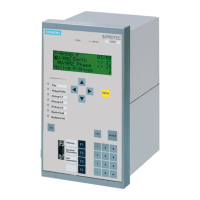
